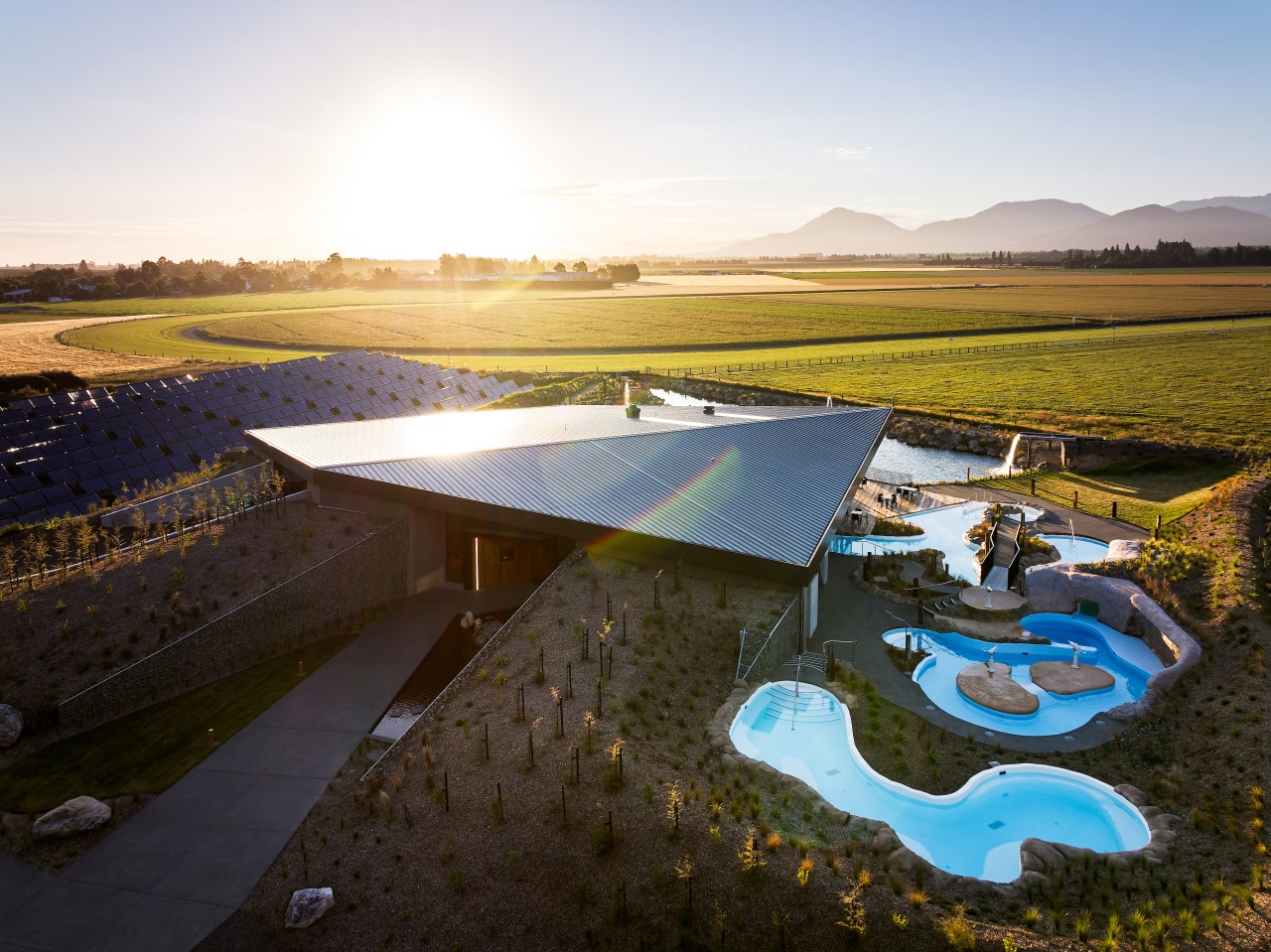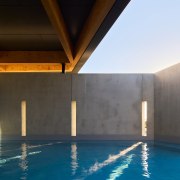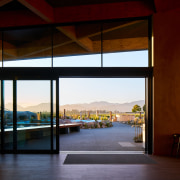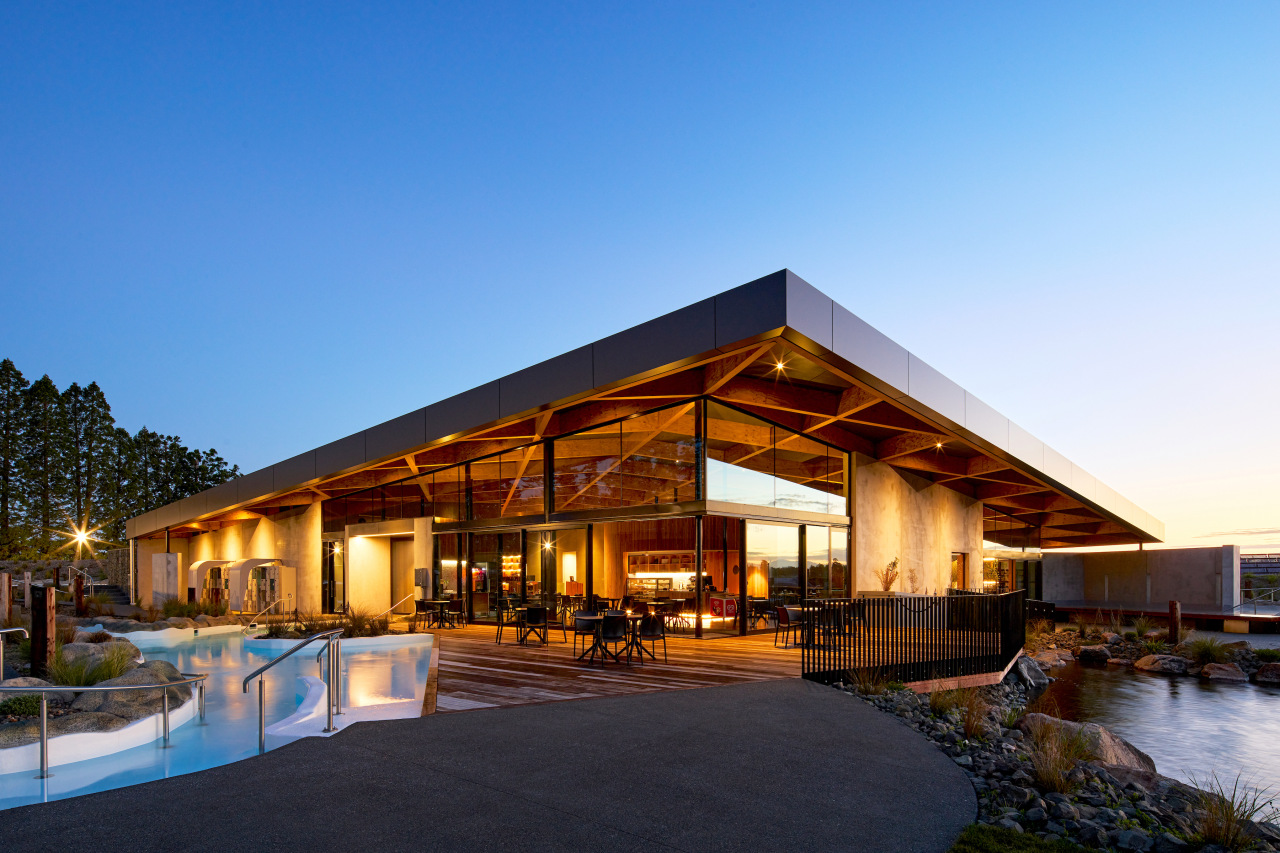Immersive experience
A strong emphasis on sustainability and an evocation of the land – in both architectural form and materials – together shaped this hot pool destination by Sheppard & Rout Architects
Designed by Jasper van der Lingen, Sheppard & Rout Architects
From the architect:
Project description
The Opuke Thermal Pools and Spa project was an innovative vision to establish a highly sustainable hot pools facility in Methven close to the base of Opuke (Mt Hutt).
The brief called for a facility that provided a high-end hot pools experience with an exclusive luxury spa offering, an adult only pool with swim up bar, and quality changing and hospitality areas.
It was also important that the whole facility had a strong sustainability ethos.
The development is a positive addition to the tourism market in Methven, which has strong ties with Mount Hutt Ski Field, helping to create employment and infrastructure to strengthen the region.
Setting and its influence on the design
The site for Opuke Thermal Pools is on the northern edge of Methven, bounded by the Methven Racecourse and mature shelter belts to adjacent farmland.
The conceptual underpinning of the design is to reflect its context on the flat Canterbury plains at the base of the mountains.
It is a journey that starts from the carpark on the plains.
Entering the building it is as if you are passing into the mountains where the major rivers emerge.
Compression and the dark masonry walls either side together evoke the experience of entering a gorge like the Rakaia River gorge close by.
Then, as you proceed further, you discover the pools – as if they are natural hot pools up in the mountains with Opuke (Mt Hutt) looming up in the background.
It is a place to explore with intrigue, surprise, and discovery, evoking the magic of finding natural hot pools in the mountains.
Our initial response to the plains site was to create landforms enclosing the external pools to protect from prevailing winds and reduce heat loss from the pool surface.
The site / foothills landscape uses excavated materials from a lake which separates the adult and family pool areas, plus the lake is also used as a heat sink for excess energy created by the solar array in summer months.
The main entry is cut through the landform, with the building emerging from the site and opening to the views to the distant main divide.
The entry volume and café, provide a public space between the adult and family pool experience, emerging from between the concrete walls and roof form above.
A large area of the site is taken up with the solar array and pool plant, which required careful orientation of the building and landscape to create a secluded pool experience.
Materials & construction
The use of raw, natural materials provides a sense of substance to the building, developed from the concept of carving through the foothills of the mountains.
Gabion walls and acid etched precast concrete lead though the opening to the interior – a dark concrete floor with light aggregates forming the base of the valley floor.
Water leads visitors through the entry in search of the source beyond.
The roof form is structurally expressive with a large waffle grid of LVL beams braced by the concrete walls and propped on slender steel columns.
The roof structure floats above the beech clad interior kitchen / café pod, and cantilevers beyond the full height glazing to provide solar protection to the interior and sheltered building edges and adult pool overhang.
The fascia is clad with a dark aluminium rainscreen – protecting the LVL structure and providing a clean roof edge above the landscape forms.
Sustainability
The complex is designed with sustainability at the forefront.
The hot water in the pools is sourced from a local water supply and heated by a large solar array. This solar array also assists with the heating and cooling in the building.
It is the biggest thermal system of its type in New Zealand with 480 panels generating up to 1MW at midday. It is a solar thermal system which is 80% efficient in contrast to a more common solar electric system which is only 25% efficient.
Some of the walls are masonry such as the gabion walls which use locally sourced stone and concrete from a local contractor using local aggregates.
The main roof structure is constructed of timber LVL members that are sourced from a South Island manufacturer from trees also grown in the South Island.
This provides good carbon capture and supports the local economy.
The exposed concrete floor provides a great thermal mass mitigating large swings in temperature inside.
The tall glass to the café faces north, bringing the warmth of the sun deep into the building while good cross ventilation helps keep temperatures even.
And while there have been no calculations determining the actual amount of carbon the building sequesters, we are confident it is significant and meaningful.
Credit list
Project
Design team
Services & fire engineer
Landscape architect
Contractor
Structural engineer
Electrical engineer
Project manager
Designed by: Jasper van der Lingen, Sheppard & Rout Architects
Story by: Trendsideas
Photography by: Jason Mann
Home kitchen bathroom commercial design
Personality plus
Classic looks, contemporary efficiency
Diving into nature
















